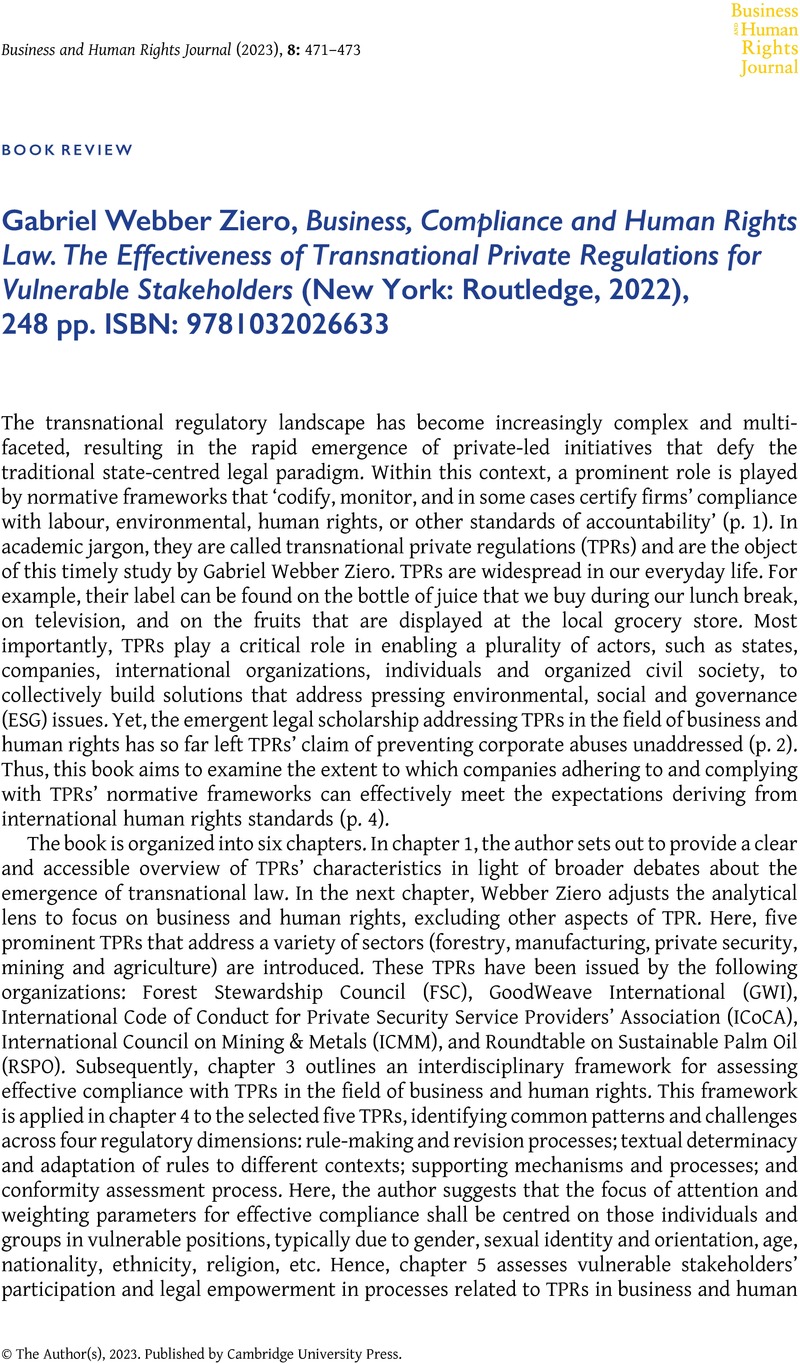No CrossRef data available.
Published online by Cambridge University Press: 24 August 2023

1 Braithwaite, J and Drahos, P, Global Business Regulation (Cambridge: Cambridge University Press, 2000).CrossRefGoogle Scholar
2 Bartley, T, Rules Without Rights: Land, Labor, and Private Authority in the Global Economy (Oxford: Oxford University Press, 2018).CrossRefGoogle Scholar
3 Parker, C and Nielsen, LV (eds.), Explaining Compliance: Business Responses to Regulation (Edward Elgar, 2011).CrossRefGoogle Scholar